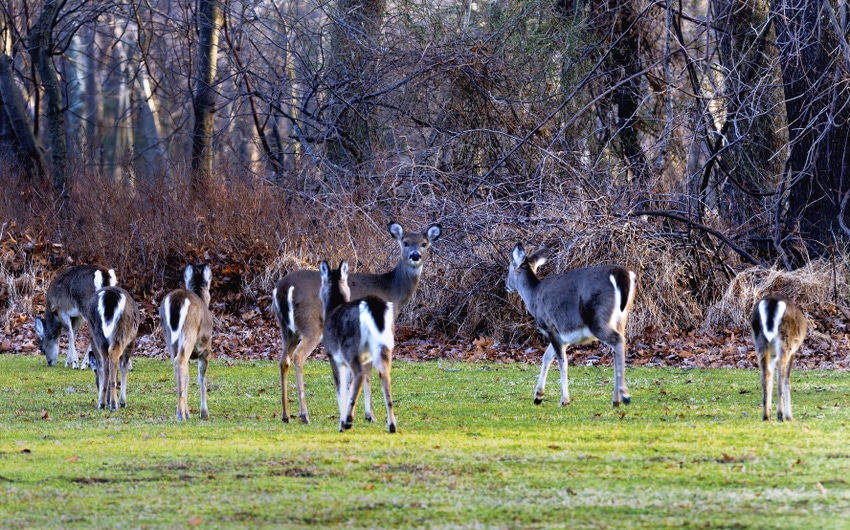Issues with cervid prionic disease elucidated.
September 28, 2017

One of the most contagious of the transmissible spongiform encephalopathies, chronic wasting disease (CWD), affects deer and represents a risk to human health and the health of farm animals.
Livestock managers in North America face many problems due to CWD, and now, a research paper published in the International Journal of Global Environmental Issues summarizes efforts in disease surveillance and risk management of CWD. The paper shows that past management strategies such as selective culling, herd reduction and hunter surveillance have had only limited effectiveness. The summary points towards new advice for optimal, cost-effective strategies in aggressive disease control.
William Leiss with the University of Ottawa in Ontario and colleagues there and elsewhere in Canada and the U.S. explained how CWD is a fatal neurodegenerative disease of various species of animals in the cervid family of mammals, which includes deer, elk, reindeer, caribou and moose. The team pointed out that CWD is endemic in both wild (free-ranging) and captive (farmed) populations of these species, which further complicates disease control.
The disease is most prevalent among deer species, affecting mule deer in particular but also black-tailed and white-tailed deer.
CWD is closely related to bovine spongiform encephalopathy in cattle, scrapie in sheep and variant Creutzfeldt-Jakob disease in people. These various diseases are caused by the misfolding of proteins or protein fragments known as prions, which self-replicate, or propagate, in tissue — specifically brain tissue — and lead to cell death and the ultimate demise of the affected organ.
The team pointed out that disease surveillance in North America has provided some qualitative assessments of the overall risk of CWD in Canada and the U.S. Animals in almost half of all U.S. states and two Canadian provinces are afflicted.
The first case outside North America was identified in South Korea in 1997, and while the European Union has strict rules and surveillance in place, the Norwegian Institute for Nature Research identified an afflicted farmed reindeer in 2016 and, subsequently, two wild individuals.
The problem is, thus, likely to become an intercontinental one unless more research is done to understand the disease and find ways to control it.
A new risk control strategy has been proposed for CWD in North America in which controlled forest fires are lit in areas where vegetation and soil are heavily contaminated with the pathogenic prions shed by animal waste and carcasses.
"Challenges in Managing the Risks of Chronic Wasting Disease" was authored by W. Leiss, M. Westphal, M.G. Tyshenko, M.C. Croteau, T. Oraby, W. Adamowicz, E. Goddard, N.R. Cashman, S. Darshan and D. Krewski.
You May Also Like


.png?width=300&auto=webp&quality=80&disable=upscale)
